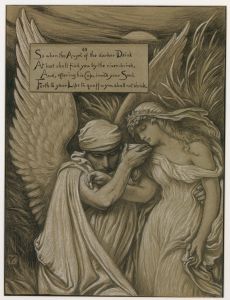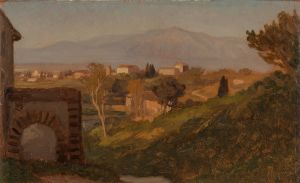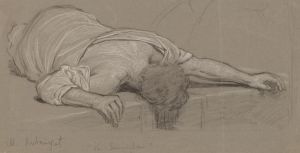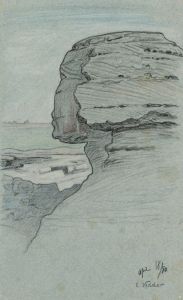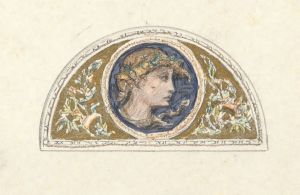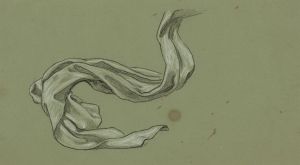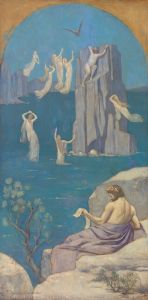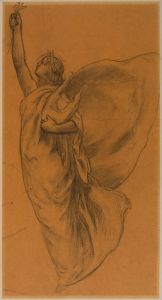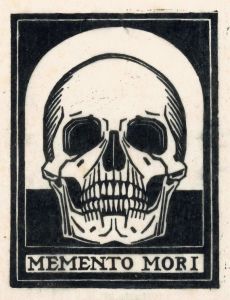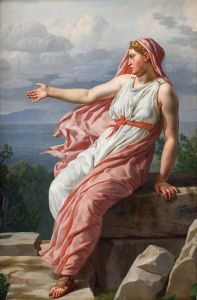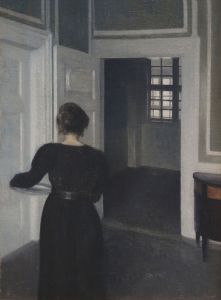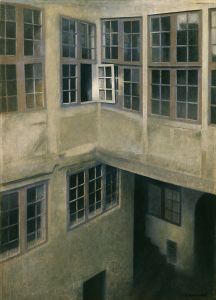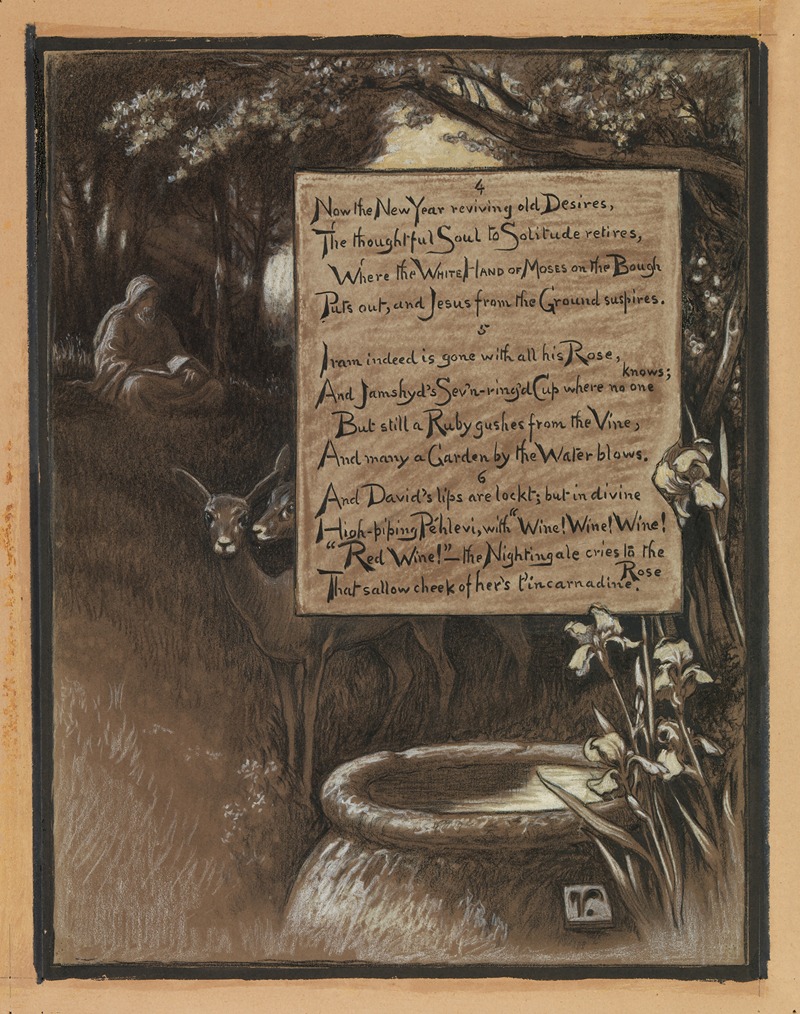
The Thoughtful Soul to Solitude Retires
A hand-painted replica of Elihu Vedder’s masterpiece The Thoughtful Soul to Solitude Retires, meticulously crafted by professional artists to capture the true essence of the original. Each piece is created with museum-quality canvas and rare mineral pigments, carefully painted by experienced artists with delicate brushstrokes and rich, layered colors to perfectly recreate the texture of the original artwork. Unlike machine-printed reproductions, this hand-painted version brings the painting to life, infused with the artist’s emotions and skill in every stroke. Whether for personal collection or home decoration, it instantly elevates the artistic atmosphere of any space.
Elihu Vedder, an American symbolist painter, created "The Thoughtful Soul to Solitude Retires" in the late 19th century. This painting is a notable example of Vedder's work, which often explored themes of mysticism, introspection, and the human condition. Vedder was part of the Symbolist movement, which sought to express ideas and emotions through symbolic imagery and often drew inspiration from literature, mythology, and philosophy.
"The Thoughtful Soul to Solitude Retires" reflects Vedder's interest in the inner workings of the mind and the concept of solitude as a space for contemplation and self-discovery. The painting depicts a solitary figure, often interpreted as a representation of the soul, in a contemplative pose. The setting is typically serene and somewhat abstract, emphasizing the introspective nature of the scene. Vedder's use of muted colors and soft, flowing lines contributes to the painting's dreamlike quality, inviting viewers to ponder the deeper meanings behind the imagery.
Elihu Vedder was born in New York City in 1836 and spent much of his career traveling between the United States and Europe. He was particularly influenced by his time in Italy, where he was exposed to classical art and the burgeoning Symbolist movement. Vedder's work often incorporated elements of classical mythology and literature, and he was known for his ability to convey complex philosophical ideas through his art.
In addition to his paintings, Vedder was also an accomplished illustrator and is perhaps best known for his illustrations for the 1884 edition of "The Rubaiyat of Omar Khayyam," a collection of Persian poetry translated by Edward FitzGerald. These illustrations further demonstrate Vedder's skill in blending visual art with literary themes, a hallmark of his artistic style.
"The Thoughtful Soul to Solitude Retires" is emblematic of Vedder's broader body of work, which frequently explored the tension between the material and spiritual worlds. His paintings often feature solitary figures or allegorical scenes that invite viewers to reflect on the nature of existence and the pursuit of knowledge and understanding.
Vedder's contribution to the Symbolist movement and his unique artistic vision have earned him a place in the history of American art. His works are held in various collections, including those of major museums and galleries, where they continue to be studied and appreciated for their depth and beauty.
While specific details about the creation and exhibition history of "The Thoughtful Soul to Solitude Retires" may not be extensively documented, the painting remains an important example of Vedder's exploration of symbolic and introspective themes. Through his art, Vedder invites viewers to engage with the mysteries of the human soul and the quest for meaning in solitude.






